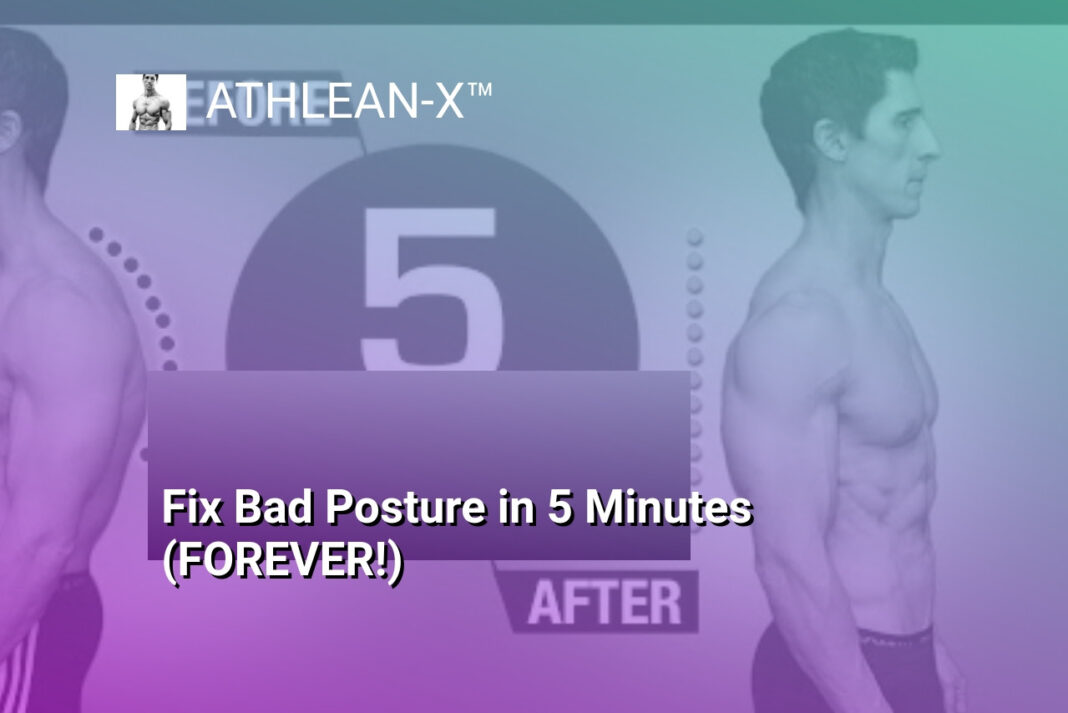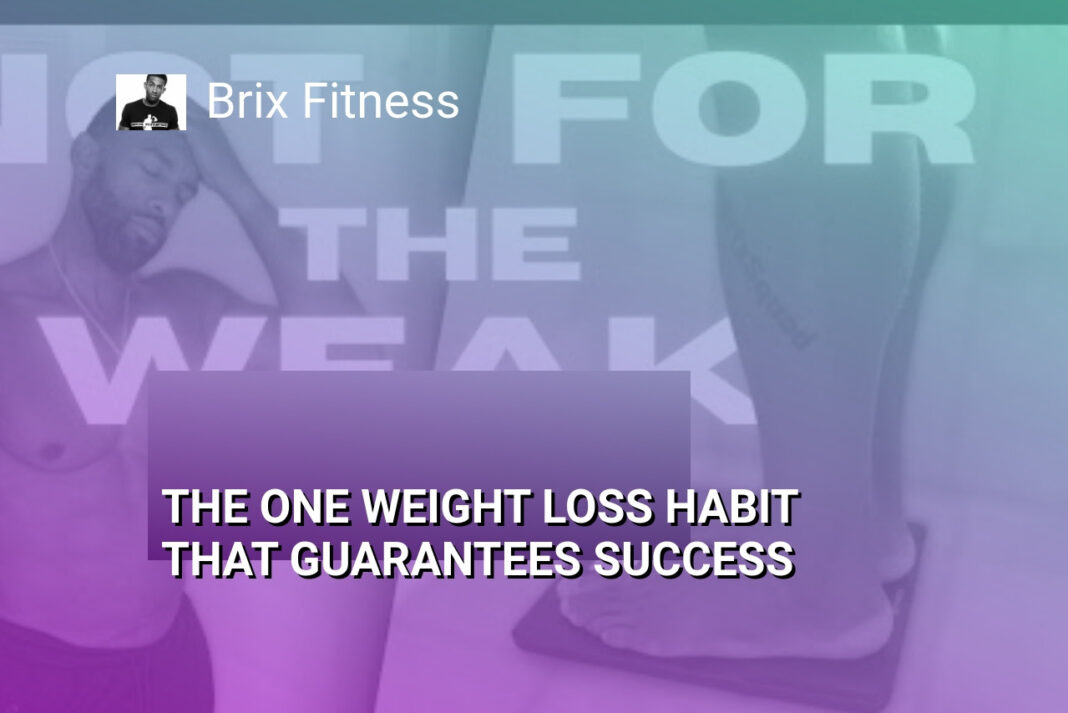The Bottom Line:
- The summary highlights the importance of proper posture and the kinetic chain in maintaining good posture, with a focus on thoracic extension and glute activation.
- The author provides a 5-minute routine consisting of 5 exercises that target the thoracic area and glutes to help reinforce good posture.
- The exercises include the Superman, Glute March, Bridge of Reach Over, Chest-to-Floor Thoracic Extension, and Wall Deadlift, all of which are designed to improve thoracic extension and glute strength.
- The author emphasizes the importance of consistency and performing the exercises with good form to achieve meaningful change in posture.
- The author also promotes his website, Athleanx.com, as a resource for more effective and time-efficient workouts.
Superman Exercise
Mastering the Superman Exercise
The Superman exercise is a powerful tool in our arsenal to target the upper back muscles and improve posture. This exercise is designed to engage the muscles between the shoulder blades, helping to lift the sternum and counteract the common issue of rounded shoulders.
To perform the Superman exercise, begin by lying on the floor with your fists placed on your sternum. Concentrate on spreading your chest and digging your elbows into the ground, which will activate the muscles in your upper back. As you lift your sternum, imagine you are trying to reveal the “S” of the Superman logo, hence the name of the exercise.
Remember to focus on performing high-quality repetitions within the 30-second time frame. The goal is to lift your sternum as high as possible by engaging those upper back muscles, rather than simply going through the motions. This targeted activation will help reinforce proper posture and address the weakness in the upper back that often contributes to poor posture.
Incorporating the Glute March
In addition to the Superman exercise, we’ll also be targeting the glutes to ensure a well-rounded approach to improving posture and activation. The glute march is a great way to build strength endurance in the glutes, which is crucial when it comes to maintaining proper posture for extended periods.
Start by assuming a bridge position, creating a straight line from your thighs to your torso. Slowly alternate lifting your feet, raising them about 5-6 inches off the ground without allowing your pelvis to drop. The key is to maintain control and stability throughout the movement, avoiding any unwanted pelvic movement.
As with the Superman exercise, focus on performing high-quality repetitions for the 30-second duration. This targeted glute activation will help support proper pelvic positioning and contribute to overall postural improvement.
Combining Thoracic and Glute Exercises
To maximize the benefits of this routine, we’ll be combining the thoracic and glute exercises into a seamless flow. After completing the Superman and Glute March exercises individually, you’ll move on to the Bridge of Reach Over, which integrates both the thoracic extension and glute activation.
In this exercise, you’ll return to the bridge position and reach across your body with the opposite arm, creating a rotational movement in the thoracic spine. This not only targets the upper back but also engages the glutes to maintain the bridge position.
By incorporating this combination exercise, you’ll be able to address both the thoracic and glute deficits simultaneously, helping to create a more holistic and effective solution for improving your posture and overall body mechanics.
Remember, consistency is key when it comes to creating meaningful change. This 5-minute routine is designed to be manageable and effective, allowing you to incorporate it into your daily routine and see the benefits over time. Stick with it, and you’ll be well on your way to better posture and improved activation of the glutes.
Glute March
Glute March
The glute march is a great way to target and improve your glute strength endurance, which is crucial for maintaining proper posture. Start by getting into a bridge position, creating a straight line from your thighs to your torso. Without allowing your pelvis to drop, begin alternating your foot lifts, raising each leg about 5-6 inches off the ground. The key is to keep your pelvis stable and avoid any side-to-side or forward-backward movement as you lift your legs.
Performing quality repetitions for 30 seconds is the goal here. This exercise challenges your glutes to work continuously, which helps to reinforce their activation and control. By maintaining a stable pelvis throughout the movement, you’re also engaging your core muscles to support proper alignment.
The glute march is an excellent exercise to include in your posture-improving routine, as it directly targets the glutes, which play a vital role in pelvic and spinal stabilization. By strengthening your glutes and improving their endurance, you’ll be better equipped to maintain good posture for extended periods, helping to alleviate any issues caused by prolonged sitting or poor postural habits.
Proper Execution
To perform the glute march correctly, start in a bridge position with your feet positioned in a straight line, toes slightly turned out. Engage your quadriceps to fully extend your knees, and squeeze your glutes together. Keep your core braced and your spine neutral throughout the movement.
Slowly lift one foot off the ground, raising it about 5-6 inches, without allowing your pelvis to drop or shift to the side. Repeat the same motion with the other leg, maintaining control and stability. Avoid any rocking or swaying of the hips as you alternate the leg lifts.
Remember to focus on quality over quantity, performing as many controlled, high-quality repetitions as possible within the 30-second time frame. This exercise is all about building glute endurance and control, which are essential for improving and maintaining proper posture.
Progression and Variations
As you become more comfortable with the glute march, you can introduce variations to challenge yourself further. One option is to hold a weight, such as a dumbbell or kettlebell, between your knees as you perform the leg lifts. This added resistance will increase the demand on your glutes and core.
Another variation is to perform the glute march with one leg elevated on a bench or step. This unilateral movement will help to identify and address any imbalances between your left and right sides, while also increasing the range of motion and difficulty.
Regardless of the variation you choose, the key is to maintain proper form and control throughout the exercise. Prioritize stability and avoid any compensations or substitutions that could diminish the effectiveness of the glute march in improving your posture and glute activation.
Bridge of Reach Over
Activating the Glutes with the Bridge of Reach Over
The Bridge of Reach Over is a powerful exercise that combines thoracic rotation and extension with glute activation. This exercise is the final component of the 5-minute routine, and it helps to tie together the previous exercises targeting the upper back and glutes.
To perform the Bridge of Reach Over, start by getting into a bridge position, with your feet flat on the floor and your hips lifted. From this position, reach your opposite arm across your body, extending your arm and rotating your upper back. Ensure that you maintain a strong glute contraction throughout the movement, avoiding any dropping or sagging of the hips.
The key focus points for this exercise are:
1. Maintaining a strong glute contraction to keep the hips elevated and stable.
2. Reaching the opposite arm across your body, focusing on thoracic rotation and extension.
3. Performing the movement with control and precision, avoiding any compensation or substitution patterns.
By incorporating the Bridge of Reach Over into your 5-minute routine, you’ll be able to further activate and strengthen your glutes while also improving your thoracic mobility and posture. This exercise is a fantastic way to wrap up the routine and leave you feeling more aligned, engaged, and ready to take on the day.
Targeting the Upper Back with the Chair Dip
The second thoracic exercise in the 5-minute routine is the Chair Dip, which focuses on improving upper back mobility and strength. This exercise requires a chair or other elevated surface, and it’s designed to target the muscles between the shoulder blades that are often weak or tight, contributing to poor posture.
To perform the Chair Dip, start by positioning your elbows on the chair and your hands on the upper back. From this position, slowly lower your chest towards the ground, leading with the chest and focusing on thoracic extension. As you lower, imagine trying to touch your chest to the ground, while the elbows prevent you from going too low.
The key benefits of the Chair Dip include:
1. Targeting the upper back muscles, which are crucial for maintaining good posture.
2. Providing a gentle stretch to the lats, which can also contribute to rounded shoulders.
3. Reinforcing the thoracic extension that was emphasized in the previous exercises.
Remember to perform the Chair Dip with control and focus on quality repetitions, rather than just going through the motions. By incorporating this exercise into your routine, you’ll be taking another step towards improving your overall posture and activating the necessary muscle groups.
Integrating the Wall Deadlift for Glute Strength
The final glute exercise in the 5-minute routine is the Wall Deadlift, which utilizes an RDL (Romanian Deadlift) pattern to target the glutes and reinforce thoracic extension.
To perform the Wall Deadlift, start by standing with your hands against a wall, keeping your knees slightly bent. From this position, hinge at the hips, driving your knee up towards the wall while simultaneously kicking your foot back. Focus on maintaining a neutral spine and engaging the glutes to drive through full hip extension.
The key benefits of the Wall Deadlift include:
1. Strengthening the glutes and improving hip extension, which is crucial for proper posture.
2. Reinforcing the thoracic extension that was emphasized in the previous exercises by keeping the hands in contact with the wall.
3. Providing a controlled and accessible way to perform an RDL pattern, which can be challenging for some individuals.
Remember to perform the Wall Deadlift with both legs, alternating 30 seconds on each side. This exercise, combined with the other glute and thoracic exercises in the routine, will help to create a strong foundation for improved posture and overall movement quality.
Chest-to-Floor Thoracic Extension
Chest-to-Floor Thoracic Extension
The second thoracic exercise actually just requires a chair. You come down here on the floor and you take your elbows and you put them on top of the chair, and your hands are going to go on the top of your upper back. Now, at this point, your goal is to just sink yourself down, really trying to lead with your chest. In other words, try to touch your chest to the ground, obviously being limited by the fact that your elbows are preventing you from going too, too low.
This is great because it focuses in right on that area that we spoke about earlier. The key here is to perform these as repetitions as well by lifting up and then again resetting and dropping the chest down as best you can. The additional benefit that comes from this is that we’re getting a good lat stretch, and we know that the lats are also internal rotators of the shoulder contributing to more of that rounded, hunched posture, so we’re getting a double bang for our buck. Remember, perform high quality repetitions for 30 seconds and move on to the next glute exercise.
Wall Deadlift (Wall DL)
And that exercise is actually called a Wall DL, which is utilizing an RDL pattern, but it’s helping to strengthen those glutes once again and establish full hip extension while also reinforcing that thoracic extension that we’re looking for. So, you put your hands up against the wall like this and you drive your knee up into the wall as well. Now what we’re really focusing on is actually this down leg, because what I want to do at this point is kick my foot backwards to hinge but establish this flexed hip position and then drive off of that utilizing the glute to get through full hip extension. The only way I’m getting my knee back to the wall is to fully extend through the hip. And again, full hip extension is good glute activation and by doing that we’re fixing the pelvis from below and helping to reinforce that upper back.
And oh, by the way, the upper back is being reinforced in this position by keeping the hands in contact with the wall, which establishes the same dip that we had on that chair exercise to keep that extension that we’re looking for. The first time through you go 30 seconds on the right leg and the second time you perform this, you go 30 seconds on the left leg.
Bridge Reach Over
Now, with 30 seconds of each of those exercises performed, you’re now one minute into the routine. You repeat that combination one more time and you’re two minutes in total. Now, we’ve performed the 30 seconds, however, of that combination exercises. This is one of my all-time favorites is a Bridge of Reach Over. So now we’re going to go back to that bridge, but this time reach across and back with the opposite arm. So, we’re getting that thoracic rotation and extension at the same time. We’re getting that lift in activation through the glutes so we can tie in both of these deficits and work on them all at one time and kind of bring it all together with just this final 30 seconds.
Wall Deadlift
The Wall Deadlift
The wall deadlift is a variation of the traditional Romanian deadlift (RDL) that helps to strengthen the glutes while also reinforcing thoracic extension. This exercise utilizes the wall as a point of contact to ensure proper form and activation of the targeted muscles.
To perform the wall deadlift, start by standing with your hands placed against the wall at about shoulder height. Engage your core and drive one knee up towards the wall, while simultaneously hinging at the hips to kick the opposite foot back. Focus on maintaining a straight line from your head to your heels, and avoid rounding your back. The key is to fully extend your hips at the top of the movement, squeezing your glutes to get the most out of the exercise.
By keeping your hands in contact with the wall, you’re establishing the same thoracic extension cue as the previous chair exercise. This helps to reinforce the proper upper back positioning and prevent any compensations or loss of posture during the movement.
Perform the wall deadlift for 30 seconds on one leg, then switch and repeat on the other side. This ensures that you’re working both sides equally and addressing any potential imbalances. After completing the first set, repeat the exercise for another 30 seconds on each leg to further challenge the glutes and solidify the movement pattern.
The wall deadlift is a great addition to the 5-minute routine, as it seamlessly integrates the focus on thoracic extension and glute activation. By incorporating this exercise, you’re addressing two key areas that contribute to poor posture and movement dysfunction, helping to improve overall body alignment and function.
Maintaining Consistency
Remember, the key to creating meaningful change is through consistent practice. This 5-minute routine is designed to be quick and manageable, so you can easily incorporate it into your daily routine. By dedicating just a few minutes each day to these targeted exercises, you’ll start to see improvements in your posture, glute activation, and overall movement quality.
Don’t be discouraged if you don’t feel the changes immediately. Improving posture and activating the glutes takes time and consistent effort. Trust the process, and keep up with the routine. Over time, you’ll notice a significant difference in how you carry yourself and the way your body moves.
Expanding Your Workout Routine
If you’re looking for a more comprehensive workout program that is equally effective and time-efficient, be sure to check out the resources available at Athlean-X.com. The team at Athlean-X has developed a wide range of workout programs and exercises that are designed to help you achieve your fitness goals, whether you’re looking to improve your posture, build strength, or enhance your overall athletic performance.
Remember to leave your comments below and subscribe to the channel to stay up-to-date on the latest fitness and training tips. Together, we can work towards improving our posture, activating our glutes, and achieving our fitness goals.





